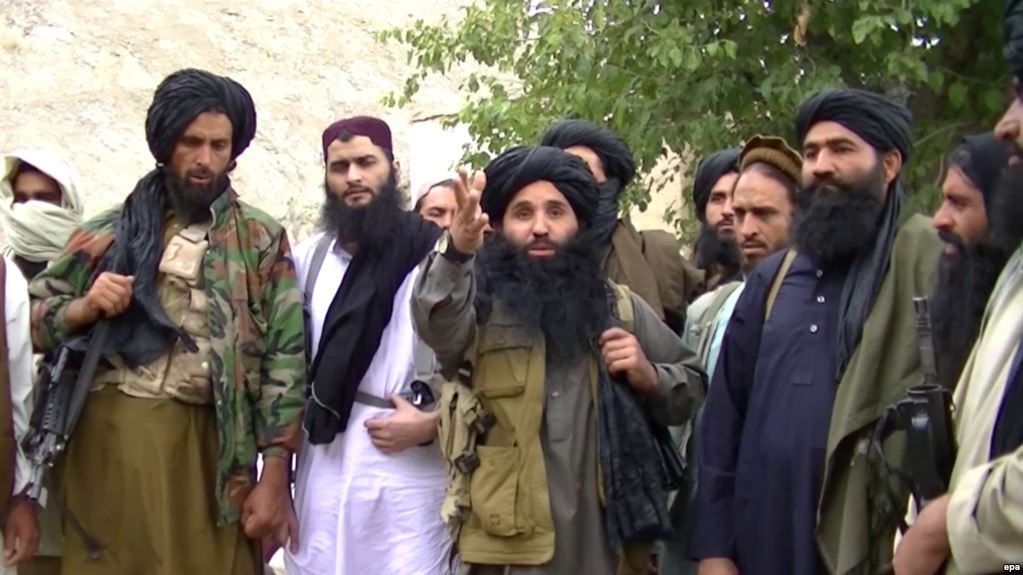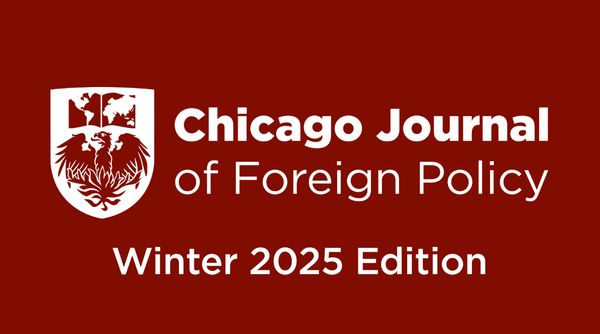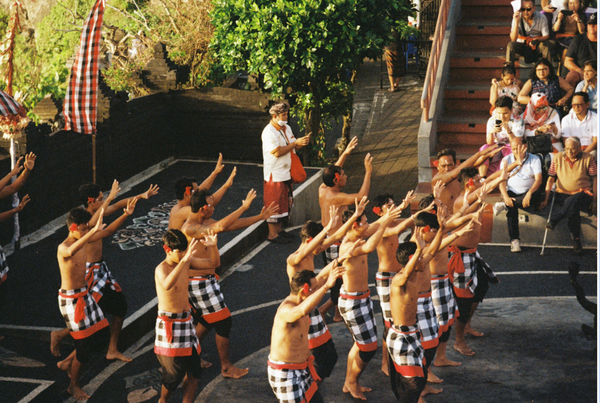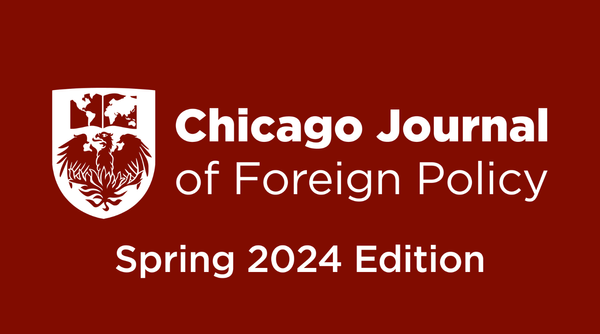Dubious Decapitation: How Mullah Fazlullah’s Death Will Affect the Pakistani Taliban

by BEN SILVIAN, ’20
At first glance, the U.S. military’s successful drone strike against Mullah Fazlullah, the head of the Pakistani Taliban (TTP), on June 13 is a major success. Fazlullah, who had lead the militant group since 2013, was known to be a “particularly ruthless militant.”[i] He was responsible for ordering the 2012 attack against future Nobel Peace Prize winner Malala Yousafzai for supporting women’s rights under oppressive TTP rule.[ii] This was not an isolated act of cruelty; Mullah Fazlullah ordered many deadly attacks while he was in power, including one against a Pakistani army school, which killed 140 students and teachers.[iii] It is thus no surprise that many are celebrating Fazlullah’s death and that Pakistani Caretaker Prime Minister Nasir-ul-Muluk claimed that Fazlullah’s death is a “significant development in the fight against terrorism.”[iv]
Even though this is a major symbolic victory that has the potential to do significant damage to the TTP, Pakistani and ISAF forces should not blindly presume that it will. In fact, even though successful air strikes against terrorist leaders often make international headlines because they provide clear benchmarks of military success, the academic literature on the efficacy of leadership decapitation is far from conclusive. In the ideal scenario, the assassination of a terrorist leader will hurt the organization’s morale and undermine its ability to coordinate attacks. However, resilient insurgent organizations can often overcome this setback, and return with an even greater passion for revenge. Understanding the resilience of the TTP is necessary to understand how their leader’s death will affect them. So, how resilient is the TTP?
One widely-used metric used to measure organizational resilience is institutionalization. Austin Long argues that if a group has clear upper-level hierarchy, functional specialization, and standard operating procedures, that is to say it has clear lines of succession and a clear pool of replacements for each leader, the group will likely be able to “routinely and smoothly replace lost leaders.”[v] By contrast, the loss of a leader who propelled his group forward with his personal charisma should be far more devastating.
Another metric used for measuring resilience is decentralization. According to this theory, advanced by Kathleen Carley, decentralized groups are not reliant on upper leadership and thus less affected by a leader’s death.[vi] As Jenna Jordan puts it, organizations that are “hierarchical at the upper levels, while maintaining decentralized networks at the operational level” will be especially resilient.[vii]
The good news is that the TTP appears to be relatively poorly institutionalized. The organization had not chosen a successor prior Fazlullah’s death and did not announce a new leader within the week afterward. During that week, many news outlets predicted that Abdur Rahman Fateh, from the district of Swat, would be appointed the new leader.[viii] However, on June 24th the TTP announced that its new leader would be Mufti Noor Wali Mehsud, who comes from Waziristan, the region of the organization’s founder Baitullah Mehsud.[ix] This indecision implies that the group lacks formalized procedures for replacing leaders.
However, the TTP certainly is decentralized, and thus may not be severely impacted by its leader’s death. The TTP can be “best understood as an umbrella organization” – it formed in 2007 when 13 militant factions who opposed the Pakistani government unified under one banner.[x] On the whole, this implies that the TTP is moderately resilient; it may not be able to replace leaders quickly and smoothly, yet strong upper level leadership may not be necessary for tactical success.
It is worth noting that this is not the first time the TTP has lost a leader. The power vacuum created by the death of Mehsud in 2009 had many expecting the group’s imminent collapse. A gun battle even broke out between TTP leaders vying to consolidate power,[xi] and US Envoy to Afghanistan and Pakistan Richard Holbrooke claimed the TTP was on the verge of splitting, now that Mehsud, the group’s ‘unifying force’, was dead.”[xii] However, despite the group’s lack of institutionalization, Hakimullah Mehsud was able to consolidate power and keep the TTP together.[xiii] Keith Patrick Dear even claims that since then the group has strengthened; through 2013, no groups split from the TTP and five merged with it while the organization strengthened its ties with Al-Qaeda.[xiv] That said, the TTP has become far less deadly since 2009. While it conducted 37 suicide attacks in 2009, that number fell to 12 in 2013, and down to just 5 in 2016. Of course, it would be presumptuous to attribute this decline directly to Baitullah Mehsud’s death, but it certainly seems to have played a role.[xv] All that we can garner from this evidence is that the future of the TTP is uncertain. The removal of Mullah Fazlullah might damage the organization, but probably not severely.
That said, there is one more important metric of resilience: the insurgent group’s level of popular support. According to Jenna Jordan, popular support is a key indicator of group resilience because it allows a group to continue to recruit, raise money, and maintain a strong ideological foundation after losing a leader. In their 2013 survey of the Pakistani public, Kalenthaler and Miller found that about a third of Pakistanis saw the TTP in a positive light – while just 21 percent believed they provide social services to Muslims, 36 percent appreciated their commitment to ridding Pakistan of apostates and munafiqin (false Muslims). TTP support was far higher among Pashtuns in the Khyber Pakhtunkhwa province, which is unsurprising since most TTP fighters are Pashtuns.[xvi] This substantial popular support, especially in the TTP’s main stomping grounds, offers cause for concern that the TTP will get back on its feet under Mufti Noor Wali Mehsud, and continue to find recruits.
Overall, although it is possible that Mazlullah’s death will harm the TTP, it is almost certainly not a silver bullet, and it would be a mistake to see this success as a sign that the US should invest substantially more in isolated air strikes. One of the biggest reasons to be wary is that despite great advances in precision technology, civilian casualties are still quite common, and nothing creates anti-Western sentiment and popular support for terrorist organizations like American-induced civilian casualties.
Finally, it is important to remember that many of the US’s greatest successes in counterinsurgency began with situational understanding, not brute force. The US tried nearly every violent counterinsurgent strategy possible in Operation Rolling Thunder in Vietnam with very little success against the Viet Cong. However, US forces eventually realized that peasants were turning to the Viet Cong because South Vietnamese village elders were keeping absurdly high proportions of their peasants’ crops; to the peasants, the Viet Cong, who would keep less, were thus the lesser of two evils. When the US capped the percentage of peasants’ crops that village elders could keep, the Viet Cong quickly collapsed. Similarly, the American troop surge in Iraq in 2006 would never have succeeded in defeating Al Qaeda without the Anbar Awakening, in which American forces paid Sunni militants to lay down their arms and provide US forces with valuable intelligence.
Only time will tell whether Fazlullah’s death serves as a serious setback for the TTP – I am certainly skeptical. But even if it does prove effective, the US can’t eliminate every militant in the state of Pakistan. Only through situational understanding and innovative solutions can the US and Pakistani governments successfully quell the threat of terrorism and insurgency in Pakistan.
[i] William Branigin and Sayed Salahuddin, “Pakistani Taliban Leader Mullah Fazlullah Killed in U.S. Airstrike in Afghanistan,” Washington Post, June 15, 2018, sec. Asia & Pacific, https://www.washingtonpost.com/world/asia_pacific/pakistan-taliban-leader-mullah-fazlullah-is-killed-in-a-us-airstrike-in-afghanistan/2018/06/15/9ea6cc56-70ab-11e8-b4d8-eaf78d4c544c_story.html.
[ii] Basharat Peer, “The Girl Who Wanted to Go to School,” The New Yorker, October 10, 2012, https://www.newyorker.com/news/news-desk/the-girl-who-wanted-to-go-to-school.
[iii] William Branigin and Sayed Salahuddin, “Pakistani Taliban Leader Mullah Fazlullah Killed in U.S. Airstrike in Afghanistan,” Washington Post, June 15, 2018, sec. Asia & Pacific, https://www.washingtonpost.com/world/asia_pacific/pakistan-taliban-leader-mullah-fazlullah-is-killed-in-a-us-airstrike-in-afghanistan/2018/06/15/9ea6cc56-70ab-11e8-b4d8-eaf78d4c544c_story.html.
[iv] Associated Press. “Pakistan: Killing of Pakistan Taliban Chief ‘Significant.’” Star-Telegram. Accessed June 25, 2018. http://www.star-telegram.com/news/nation-world/world/article213303589.html.
[v] Austin Long, “Whack-a-Mole or Coup de Grace? Institutionalization and Leadership Targeting in Iraq and Afghanistan,” Security Studies 23, no. 3 (July 3, 2014): 471–512, https://doi.org/10.1080/09636412.2014.935229.
[vi] Kathleen M. Carley, et al. 2003, “Destabilizing Dynamic Covert Networks” In Proceedings of the 8th International Command and Control Research and Technology Symposium. Conference held at the National Defense War College, Washington DC. Evidence Based Research, Vienna, VA.
[vii] Jenna Jordan, “Attacking the Leader, Missing the Mark: Why Terrorist Groups Survive Decapitation Strikes,” International Security 38, no. 4 (April 2014): 7–38, https://doi.org/10.1162/ISEC_a_00157.
[viii] Daud Khattak, “Who Will Be the Next Leader of the Pakistani Taliban?,” The Diplomat, June 19, 2018, https://thediplomat.com/2018/06/who-will-be-the-next-leader-of-the-pakistani-taliban/.
[ix] “Pakistani Taliban Names New Leader after Fazlullah Death – Xinhua | English.news.cn,” Xinhua, June 24, 2018, http://www.xinhuanet.com/english/2018-06/24/c_137276699.htm.
[x] Mumtaz Ahmad, “Mapping Pkistan’s Internal Dynamics: Implications for State Stability and Regional Secuirty” (National Bureau of Asian Research, February 2016), https://reliefweb.int/sites/reliefweb.int/files/resources/SR55_Mapping_Pakistan_February2016.pdf.
[xi] Joshua Partlow Khan and Haq Nawaz, “Power Struggle Ensues After Taliban Chief’s Apparent Death,” August 9, 2009, http://www.washingtonpost.com/wp-dyn/content/article/2009/08/08/AR2009080800187.html.
[xii] Keith Patrick Dear, “Beheading the Hydra? Does Killing Terrorist or Insurgent Leaders Work?,” Defence Studies 13, no. 3 (September 2013): 293–337, https://doi.org/10.1080/14702436.2013.845383.
[xiii] Austin Long, “Whack-a-Mole or Coup de Grace? Institutionalization and Leadership Targeting in Iraq and Afghanistan,” Security Studies 23, no. 3 (July 3, 2014): 471–512, https://doi.org/10.1080/09636412.2014.935229.
[xiv] Keith Patrick Dear, “Beheading the Hydra? Does Killing Terrorist or Insurgent Leaders Work?,” Defence Studies 13, no. 3 (September 2013): 293–337, https://doi.org/10.1080/14702436.2013.845383.
[xv] Chicago Project on Security and Terrorism (CPOST). 2016. Suicide Attack Database (October 12, 2016 Release). [Data File]. Retrieved from http://cpostdata.uchicago.edu/
[xvi] Karl Kaltenthaler and William Miller, “Ethnicity, Islam, and Pakistani Public Opinion toward the Pakistani Taliban,” Studies in Conflict & Terrorism 38, no. 11 (November 2, 2015): 938–57, https://doi.org/10.1080/1057610X.2015.1066214.





